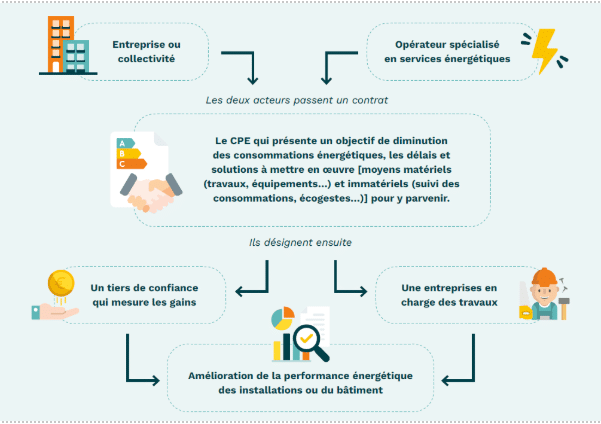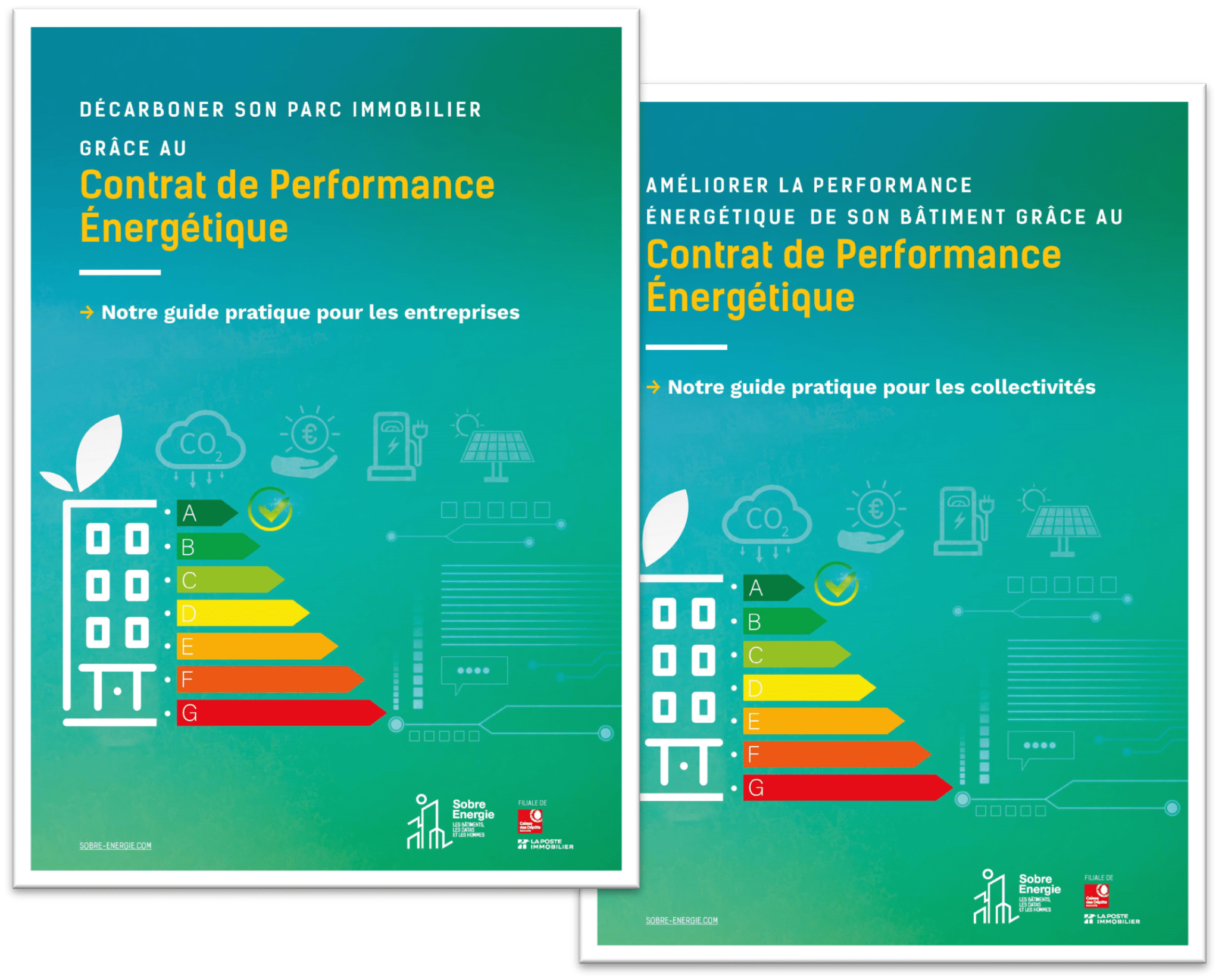With the arrival of the 1st Tertiary Eco ECO notes, it becomes urgent to put its buildings on the right reduction trajectory for 2030. To achieve your objectives, the energy performance contract (CPE) has many advantages.
Tertiary decree: Objective 2030
Reminder of regulatory objectives
The tertiary eco -energy system (DEET) requires the reduction of final energy consumption of tertiary buildings by + 1000m2 of at least:
- 40% in 2030
- 50% in 2040
- 60% in 2050
compared to a reference year taken between 2010 and 2019.
Or the achievement of objectives in absolute values according to the typology of buildings:
- Offices
- Education
- Health
- Trade
For each category, these absolute values are intended to be representative of the efficient buildings of the category of activity, both in terms of intrinsic performance of the building (insulation, systems performance) and sobriety of use.
Clearly, old buildings will have to respect, by 2030, the level of performance of the 25% of the least efficient buildings, renovated at the 2012 RT standard.
2025, the 1st tertiary decree notes are there
Each year, the subject buildings are awarded a tertiary ECO ECO note, attesting to their consumption reduction trajectory for the 2030 deadline.
Since mid-January, Ademe's OPERAT platform has been providing the 2030 objectives and annual certificates for an initial scope of activities. For taxable persons who have declared and validated their 2023 annual consumption.
This first scope of activity concerns the following subcategories:
- Early childhood reception
- Audio-visual
- Culture and shows
- Primary and secondary education
- Justice
- Restoration
- Computer server rooms
- Health-hospital centers
- Sport
- Parking
- Air and rail transport
- Light vehicle sales and services
The rest of the subcategories are the subject of a decree published soon.
Tertiary decree: how to improve your energy performance
These regulatory requirements imply a structural transformation of the way in which buildings are exploited and renovated. To achieve these objectives, it is essential to adopt an adapted and efficient energy renovation strategy.
Energy audit, to establish its tertiary decree strategy
Energy audits are the key to establishing your tertiary decree strategy and prioritizing your investments based on:
- your regulatory objectives (DEET, BACS Decree, APER law, LOM law, etc.)
- energy performance action scenarios on uses, operation and building envelope
- return on investment time in €, CO2, kWh
At Sobre Energy, our digital audits are integrated into our Datamarc Neo energy management platform, within a specific module.
Prioritize your energy renovation work
The BBC renovation label (Low consumption building), created in 2009, is a frame of reference for high energy performance renovations.
According to Cerema and Effinegie figures*, 62 % of renovated BBC office buildings comply with the reduction objectives of -40 % by 2030.
The advantages of the CPE to achieve your goals
Do you want to decarbonize your buildings or ensure your regulatory compliance by achieving your Tertiary Decree objectives?
But how can you be sure that the energy savings will be there after your work? The Energy Performance Contract (EPC) is the right tool.
What is the CPE?
→ A encrypted objective of reducing energy consumption of the building;
→ an investment, material or not, to achieve this objective;
→ continuous monitoring of energy performance;
→ a commitment of results over a specific period;
→ A bonus-maus financial promoting the achievement of the objective.

The advantages of the CPE
- An energy performance guarantee
2. A win-win contract
The CPE is a safe contractual tool for your structure. With the principle of guaranteed savings, the energy efficiency operator engages on quantified objectives: he is exposed to penalties or financial compensation if he does not reach the expected energy performance.
3. A global service
The CPE constitutes a global service contract, insofar as it can integrate a wide variety of operations linked to improving the energy performance of your building: energy audit of the site, design and realization of work, renewal, maintenance and Piloting installations ...
4. A delegation of tasks to experts
With the CPE, you entrust all of your energy performance improvement operations to specialized companies. For you, this is saving time, savings in human resources and the assurance of an effective energy saving process in the long term.
Measure and verify performance as part of a CPE
The measurement and verification plan is an essential component of the CPE: it ensures the monitoring of your energy savings and guarantee the achievement of the targeted performance. This plan is generally based on the IPMVP (International Performance Messure and Verification Protocol) protocol, a reference recognized internationally.
Throughout the duration of the contract, an independent third party assesses the energy performance of the site, in accordance with the measurement and verification plan provided by the CPE.
Sobre Energy intervenes as an independent third party in your CPE approach. Our teams of experts work throughout the duration of your contract:
- upstream energy audit
- Consulting for work financing with its partners (EEC, EDURENOV for schools, etc.)
- Measurement and verification of the expected energy gains with our module my eco-performance on Datamarc Neo
